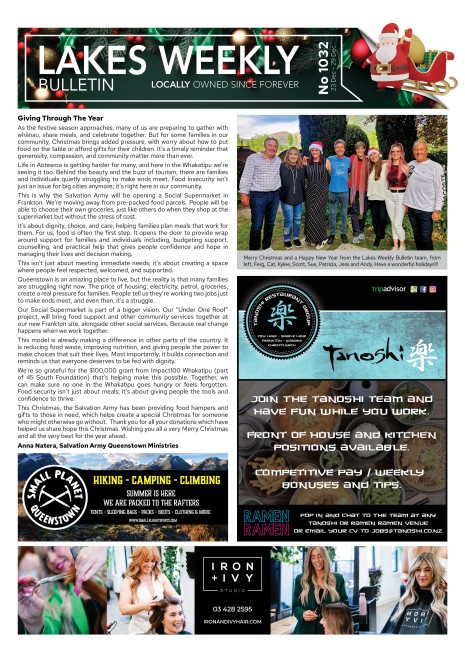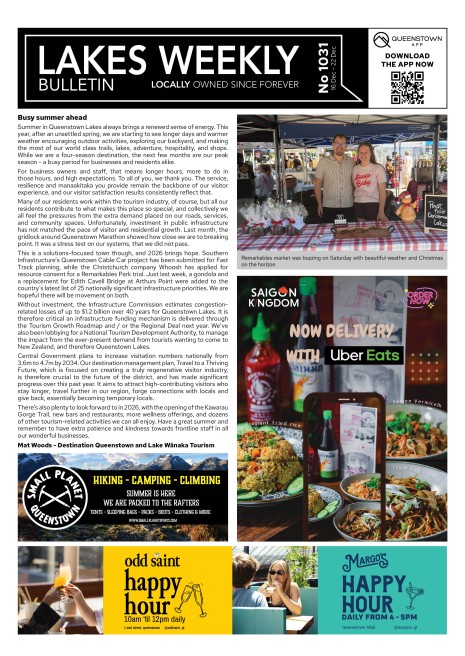Staff housing success: how it’s done in Aspen

“Be brave. Be bold.”
That’s the message from the Mayor of Queenstown Lakes’ sister city, Aspen, in the wake of Queenstown’s critical staff housing crisis.
“You’re not alone. It’s a global problem for resorts and it calls for strong leadership,” says Mayor Torre, freshly re-elected for his third term.
“Queenstown can learn from us – our successes and our mistakes.”
Aspen was very fortunate to have had leaders with incredible foresight, who put slow growth and land use policies in place 50 years ago, he says. A deed-restricted housing programme also started just over 40 years ago.
Measures include special impact fees and taxes, and real estate transfer taxes, that still ensure any new development is offset or mitigated according to its employee housing impact.
Called ‘inclusion zoning’, this is calculated on a square metre basis, and Torre says they encourage actual units or housing over cash in lieu.
“If someone wants to build, say a 1500sqm, two-bedroom condo, that may have to be mitigated by including a 500sqm deed-restricted unit for the local workforce or residents.”
Millions of dollars are also collected from property developers for the city’s Employee Housing Fund and the council both builds its own housing projects and creates public-private partnerships with the free market.
“If people want approval to build a development they may need to build us 10 units under our Deed Restrictions, with sunset clauses, giving us the right to buy and own those in perpetuity if we choose to.”
He says $20m to $30m doesn’t even put a dent in the problem with each unit costing almost $1m to build.
“Our forebears were real pioneers on a county level. They did the necessary land deals and put the mechanisms in place ensuring adequate zoning,” he says.
“Aspen is tiny, only 4 square miles (10.3kms), but any employee housing has to be within our strict town boundaries. We’re at the end of a 40 mile (64kms) valley which has five other communities dotted along it, but we didn’t want to expand that zone in case we put pressure on them,” he says.
“We’re now looking at whether we can expand our urban growth boundary as part of a more regional programme as those communities need it too.”
Some employees and service families live there in the likes of Snowmass, Basalt and Woody Creek, but Torre says workers don’t want to commute any more than 30 minutes. “We’ve tackled that with a real robust transit system.”
Torre encourages Queenstown’s leaders to look at nearby towns as satellite options but to also ensure that easily accessible public transport is offered day and night for the younger workers wanting to enjoy the nightlife in Queenstown.
Aspen has adopted a Growth Management Quota System through which the council and community set a growth rate based on how much development will be tolerated.
Submissions are reviewed annually and while they’re capped Torre says the number of applications rarely reaches its limit. The best quality proposals are chosen in a system designed to attract the best competition.
Employee housing is a problem that Torre says he hit head-on when he first got elected to council 20 years ago with a controversial 250-unit development.
“As a young councillor it was one of the first things I had to vote on and I argued it was important to ensure adequate employee housing for that project,” he says.
Many employers who, back then, didn’t agree have since changed their minds, says Torre.
“I was in Telluride recently for meetings and we heard on the radio two restaurants were closing in two days due to staff shortages so we went to offer support. They closed the doors while we were walking in, saying employees wanted it closed now,” says Torre.
“It was a real eye-opener. This worker shortage problem is hitting and it’s hitting fast.
In Aspen, we’re very fortunate we’ve weathered the storm.”
Torre says Aspen’s keen to help other resorts like Queenstown tackle these serious issues and directs them to Aspen’s Housing Strategy Plan which is publicly available on the Aspen City Council website.
Former Queenstown Lakes Mayor Jim Boult and CEO Mike Theelen were due to visit Aspen and learn more about its solutions in 2020, but the trip was cancelled due to Covid, a council spokesperson says.
QLDC economic development manager Peter Harris points out that councils and individual states in the US have a wider range of power than NZ councils, such as introducing sales taxes.
Queenstown Lakes District Council Acting CEO Meaghan Miller says Queenstown and Aspen have a long history.
“Council became a sister city with Aspen (in 1992) because of the potential shared learnings between resort towns, but particularly because of the challenges and learnings which Aspen has already been through, such as worker accommodation and affordable housing,” she says.
“A visit to Aspen informed strategic discussions which in turn led to the establishment of the housing trust.”









